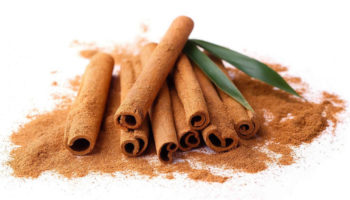
What is Echinacea ?
Echinacea also known as purple coneflower, coneflower or American coneflower.
There are nine known species of echinacea, all of which are native to North America. They were used by Native Americans of the Great Plains region as traditional medicines.
Echinacea is used as a dietary supplement for the common cold and other infections, based on the idea that it might stimulate the immune system to more effectively fight infection. Echinacea preparations have been used topically (applied to the skin) for wounds and skin problems. Echinacea does not seem to help prevent or treat herpes. The effect of echinacea on other conditions is not known.
Many studies have been done on echinacea and the common cold. Much less research has been done on the use of echinacea for other health purposes. So far, evidence suggests that echinacea may prevent the common cold. It also might help as a treatment. Some studies, many of them small, have found that taking echinacea may reduce the length of a cold and the severity of its symptoms. However, two large clinical trials found no benefits at all.
Applying echinacea juice to the skin has been suggested for wound healing, and taking echinacea by mouth or injecting it has been suggested for vaginal yeast infections. However, clear evidence is lacking in these areas.
Echinacea generally doesn’t cause problems for most people, but some people taking the herb have reported side effects such as stomach upset or diarrhea. Echinacea also has the potential to interact with other medications you might be taking, so talk with your doctor before using echinacea supplements.
The roots and above-ground parts of the echinacea plant are used fresh or dried to make teas, squeezed (expressed) juice, extracts, capsules and tablets, and preparations for external use. Several species of echinacea, most commonly Echinacea purpurea or Echinacea angustifolia, may be included in dietary supplements.
The phytochemicals vary among the many Echinacea species and occur at various concentrations in different parts of the plant (source 1). The parts of the plants utilized for their medicinal purposes are as follows:
- Echinacea purpurea herb: fresh above ground parts harvested at flowering time and freshly processed above ground parts harvested during the flowering season
- Echinacea purpurea root-underground parts harvested mechanically
- Echinacea pallida : fresh or dried above ground parts collected at the time of flowering
- Echinacea pallida : root-fresh or dried root cultivated using a plow, air-dried.
- Echinacea angustifolia : fresh or dried roots or the fresh or dried above ground parts collected at the time of flowering.
The uniqueness of each species is clearly demonstrated by specific parts of the species used, how it is harvested and prepared.
Echinacea for Preventing and Treating the Common Cold
Preparations of the plant Echinacea are widely used in some European countries and in North America for common colds. Echinacea preparations available on the market differ greatly as different types (species) and parts (herb, root or both) of the plant are used, different manufacturing methods (drying, alcoholic extraction or pressing out the juice from fresh plants) are used and sometimes also other herbs are added.
The Cochrane Collaboration 2 recently reviewed 24 controlled clinical trials with 4631 participants investigating the effectiveness of several different Echinacea preparations for preventing and treating common colds or induced rhinovirus infections. The majority of trials investigated whether taking Echinacea preparations after the onset of cold symptoms shortens the duration, compared with placebo. Echinacea products have not been shown to provide benefits for treating colds.
In another study published in July 2005 3 showed that the herb echinacea neither prevented nor relieved the symptoms of rhinovirus infections, the most common cause of the ‘common cold’.
Conclusion
Taking echinacea after you catch a cold has not been shown to shorten the time that you’ll be sick.
Taking echinacea while you’re well may slightly reduce your chances of catching a cold. The strongest evidence for echinacea as a cold treatment comes from studies of Echinacea purpurea. Studies of Echinacea angustifolia and any echinacea root have had weaker results. However, the evidence on this point is completely uncertain.
Echinacea may not work as well in children and young adults as it does in older adults. Currently, the National Center for Complementary and Integrative Health is funding research to identify the active constituents in echinacea and to study the effects on the human immune system of substances in bacteria that live within echinacea plants.
The most common reactions reported by study subjects were unpleasant taste, tiredness, somnolence, dizziness, headache, aggressiveness and allergic reactions.
References- U.S. Food and Drug Administration – Assessment of the Pharmacology, Toxicology – https://www.fda.gov/ohrms/dockets/dailys/00/sep00/091100/cp00001%20attachment_2.pdf
- Cochrane Review 20 February 2014 – Echinacea for preventing and treating the common cold – http://www.cochrane.org/CD000530/ARI_echinacea-for-preventing-and-treating-the-common-cold
- R. B. Turner et al. N. Engl. J. Med. 353, 341–348; 2005 – http://www.nejm.org/doi/full/10.1056/NEJMoa044441





